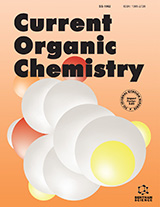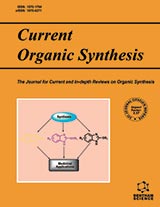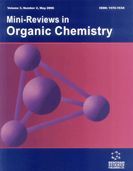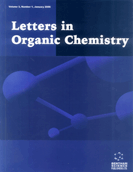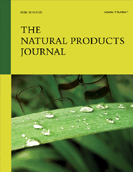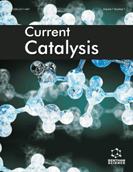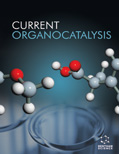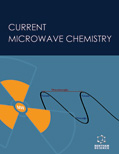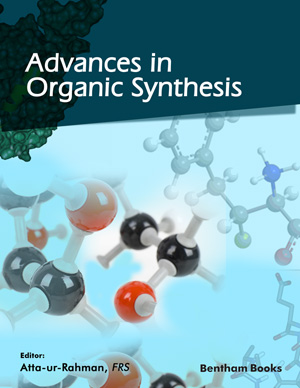Abstract
The chemistry of propargyldicobalt cations, also known as the Nicholas reaction, is Reviewed, with a focus on the developments since 1995. Advances in the understanding of the fundamental properties, such as structure, stability, and reactivity, of both the hexacarbonyl complexes and those bearing other ligands are discussed. All reactions involving propargyl cation dicobalt complexes are covered, including those stemming from ionization of propargylic leaving groups and those created by electrophilic addition to enyne complexes. Migration reactions involving either initiation or termination by propargyl cation complexes are included, as are the genera-tion and reactions of propargyldicobalt radicals. Cyclization reactions employing these cations have received much attention, in cases with the alkynedicobalt unit located in both exocyclic and endocyclic positions, and these reports are described. Particular attention is paid to preparation of medium ring cycloalkyne complexes and their heterocyclic analogues. In addition, there is discussion of the progress in the in selectivity of these reactions, especially in terms of introduction of asymmetry at the propargylic site. Finally, recent applications of Nicholas reaction chemistry in the synthesis of natural products and Related compounds are reported.
Keywords: Propargyldicobalt Cations, Nicholas reaction, Cyclization, heterocyclic analogues, natural products, REACTIONS OF ENYNE COMPLEXES, CYCLIZATION REACTIONS - EXOCYCLIC ALKYNES, SELECTIVITY-ASYMMETRIC SYNTHESIS, NICHOLAS REACTIONS, MIGRATIONS
Current Organic Chemistry
Title: Chemistry of Propargyldicobalt Cations Recent Developments in the Nicholas and Related Reactions
Volume: 5 Issue: 7
Author(s): James R. Green
Affiliation:
Keywords: Propargyldicobalt Cations, Nicholas reaction, Cyclization, heterocyclic analogues, natural products, REACTIONS OF ENYNE COMPLEXES, CYCLIZATION REACTIONS - EXOCYCLIC ALKYNES, SELECTIVITY-ASYMMETRIC SYNTHESIS, NICHOLAS REACTIONS, MIGRATIONS
Abstract: The chemistry of propargyldicobalt cations, also known as the Nicholas reaction, is Reviewed, with a focus on the developments since 1995. Advances in the understanding of the fundamental properties, such as structure, stability, and reactivity, of both the hexacarbonyl complexes and those bearing other ligands are discussed. All reactions involving propargyl cation dicobalt complexes are covered, including those stemming from ionization of propargylic leaving groups and those created by electrophilic addition to enyne complexes. Migration reactions involving either initiation or termination by propargyl cation complexes are included, as are the genera-tion and reactions of propargyldicobalt radicals. Cyclization reactions employing these cations have received much attention, in cases with the alkynedicobalt unit located in both exocyclic and endocyclic positions, and these reports are described. Particular attention is paid to preparation of medium ring cycloalkyne complexes and their heterocyclic analogues. In addition, there is discussion of the progress in the in selectivity of these reactions, especially in terms of introduction of asymmetry at the propargylic site. Finally, recent applications of Nicholas reaction chemistry in the synthesis of natural products and Related compounds are reported.
Export Options
About this article
Cite this article as:
Green R. James, Chemistry of Propargyldicobalt Cations Recent Developments in the Nicholas and Related Reactions, Current Organic Chemistry 2001; 5 (7) . https://dx.doi.org/10.2174/1385272013375247
| DOI https://dx.doi.org/10.2174/1385272013375247 |
Print ISSN 1385-2728 |
| Publisher Name Bentham Science Publisher |
Online ISSN 1875-5348 |
 6
6
- Author Guidelines
- Bentham Author Support Services (BASS)
- Graphical Abstracts
- Fabricating and Stating False Information
- Research Misconduct
- Post Publication Discussions and Corrections
- Publishing Ethics and Rectitude
- Increase Visibility of Your Article
- Archiving Policies
- Peer Review Workflow
- Order Your Article Before Print
- Promote Your Article
- Manuscript Transfer Facility
- Editorial Policies
- Allegations from Whistleblowers
- Announcements


